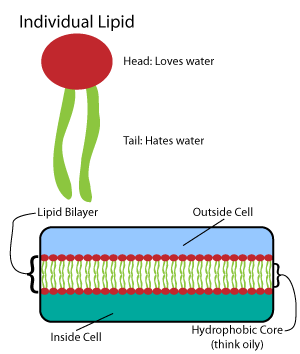|
Acetylajmaline Esterase
The enzyme acetylajmaline esterase (EC 3.1.1.80, AAE, 2β(''R'')-17-''O''-acetylajmalan:acetylesterase, acetylajmalan esterase; systematic name 17-''O''-acetylajmaline ''O''-acetylhydrolase) catalyses the following reactions: : (1) 17-''O''-acetylajmaline + H2O \rightleftharpoons ajmaline + acetate : (2) 17-''O''-acetylnorajmaline + H2O \rightleftharpoons norajmaline + acetate This plant enzyme mediates the last stages in the biosynthesis Biosynthesis is a multi-step, enzyme-catalyzed process where substrates are converted into more complex products in living organisms. In biosynthesis, simple compounds are modified, converted into other compounds, or joined to form macromolecules. ... of the indole alkaloid ajmaline. References External links * {{Portal bar, Biology, border=no EC 3.1.1 ... [...More Info...] [...Related Items...] OR: [Wikipedia] [Google] [Baidu] |
Catalysis
Catalysis () is the process of increasing the rate of a chemical reaction by adding a substance known as a catalyst (). Catalysts are not consumed in the reaction and remain unchanged after it. If the reaction is rapid and the catalyst recycles quickly, very small amounts of catalyst often suffice; mixing, surface area, and temperature are important factors in reaction rate. Catalysts generally react with one or more reactants to form intermediates that subsequently give the final reaction product, in the process of regenerating the catalyst. Catalysis may be classified as either homogeneous, whose components are dispersed in the same phase (usually gaseous or liquid) as the reactant, or heterogeneous, whose components are not in the same phase. Enzymes and other biocatalysts are often considered as a third category. Catalysis is ubiquitous in chemical industry of all kinds. Estimates are that 90% of all commercially produced chemical products involve catalysts at some st ... [...More Info...] [...Related Items...] OR: [Wikipedia] [Google] [Baidu] |
Ajmaline
Ajmaline (also known by trade names Gilurytmal, Ritmos, and Aritmina) is an alkaloid that is classified as a 1-A antiarrhythmic agent. It is often used to induce arrhythmic contraction in patients suspected of having Brugada syndrome. Individuals suffering from Brugada syndrome will be more susceptible to the arrhythmogenic effects of the drug, and this can be observed on an electrocardiogram as an ST elevation. The compound was first isolated by Salimuzzaman Siddiqui in 1931 from the roots of ''Rauvolfia serpentina''. He named it ''ajmaline'', after Hakim Ajmal Khan, one of the most illustrious practitioners of Unani medicine in South Asia. Ajmaline can be found in most species of the genus ''Rauvolfia'' as well as ''Catharanthus roseus''. In addition to Southeast Asia, ''Rauvolfia'' species have also been found in tropical regions of India, Africa, South America, and some oceanic islands. Other indole alkaloids found in ''Rauvolfia'' include reserpine, ajmalicine, serpentine ... [...More Info...] [...Related Items...] OR: [Wikipedia] [Google] [Baidu] |
Acetate
An acetate is a salt formed by the combination of acetic acid with a base (e.g. alkaline, earthy, metallic, nonmetallic or radical base). "Acetate" also describes the conjugate base or ion (specifically, the negatively charged ion called an anion) typically found in aqueous solution and written with the chemical formula . The neutral molecules formed by the combination of the acetate ion and a ''positive'' ion (called a cation) are also commonly called "acetates" (hence, ''acetate of lead'', ''acetate of aluminum'', etc.). The simplest of these is hydrogen acetate (called acetic acid) with corresponding salts, esters, and the polyatomic anion , or . Most of the approximately 5 billion kilograms of acetic acid produced annually in industry are used in the production of acetates, which usually take the form of polymers. In nature, acetate is the most common building block for biosynthesis. Nomenclature and common formula When part of a salt, the formula of the acetate ... [...More Info...] [...Related Items...] OR: [Wikipedia] [Google] [Baidu] |
Biosynthesis
Biosynthesis is a multi-step, enzyme- catalyzed process where substrates are converted into more complex products in living organisms. In biosynthesis, simple compounds are modified, converted into other compounds, or joined to form macromolecules. This process often consists of metabolic pathways. Some of these biosynthetic pathways are located within a single cellular organelle, while others involve enzymes that are located within multiple cellular organelles. Examples of these biosynthetic pathways include the production of lipid membrane components and nucleotides. Biosynthesis is usually synonymous with anabolism. The prerequisite elements for biosynthesis include: precursor compounds, chemical energy (e.g. ATP), and catalytic enzymes which may require coenzymes (e.g. NADH, NADPH). These elements create monomers, the building blocks for macromolecules. Some important biological macromolecules include: proteins, which are composed of amino acid monomers joined via pe ... [...More Info...] [...Related Items...] OR: [Wikipedia] [Google] [Baidu] |
Indole Alkaloid
Indole alkaloids are a class of alkaloids containing a structural moiety of indole; many indole alkaloids also include isoprene groups and are thus called terpene indole or secologanin tryptamine alkaloids. Containing more than 4100 known different compounds, it is one of the largest classes of alkaloids. Many of them possess significant physiological activity and some of them are used in medicine. The amino acid tryptophan is the biochemical precursor of indole alkaloids. History The action of some indole alkaloids has been known for ages. Aztecs used the psilocybin mushrooms which contain alkaloids psilocybin and psilocin. The flowering plant ''Rauvolfia serpentina'' which contains reserpine was a common medicine in India around 1000 BC. Africans used the roots of the perennial rainforest shrub Iboga, which contain ibogaine, as a stimulant. An infusion of Calabar bean seeds was given to people accused of crime in Nigeria: its rejection by stomach was regarded as a sign of i ... [...More Info...] [...Related Items...] OR: [Wikipedia] [Google] [Baidu] |


